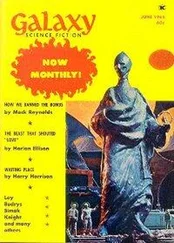One day in September 1943, when Peter (age eleven) came home from school, he encountered two South African plainclothes police at his grandmother’s house. For a German family at the time, it was not uncommon to receive a visit of this kind. The authorities in Pretoria collected all the information possible about this population, which was by definition suspect. After questioning Granny Kahlke for a long time, one of the policemen turned to the child and asked him a few precise questions: “What is your name? Who is your father? Where is he? Who is your mother?” Terrified by this unexpected interrogation, Peter believed that he had been identified as a bad boy. He had broken a window in a nearby house with a slingshot a few days earlier.
But the interrogation had no consequences. After a few weeks, Peter and his adoptive grandmother managed to forget this unpleasant episode. It was only much later, after the war, that Fritz’s son realized that this episode had a connection to his father’s clandestine activities in Berlin and Bern. Allen Dulles, with the help of his British and South African colleagues, had wanted to verify the statements of Fritz Kolbe. It was necessary to confirm the existence of the son, see if the address was correct, ask him about his life, verify the dates, and cross-check the information with counterespionage experts.
Bern and London, late August 1943
By August 20, 1943, in Bern, Allen Dulles and Gerry Mayer had in fact launched as precise an investigation as possible into their visitor from Berlin. No stone could be left unturned, all indications had to be assembled, and every hypothesis written down. A long labor of verification began. In order to do this, they asked for help from their colleagues in counterespionage (department X-2 of the OSS). All the data on the new agent were centralized in London, the European headquarters of the organization, and the Americans had no hesitation in calling on their British colleagues in MI6, who had a substantial lead over them on Germany thanks to their own network and their exceptionally abundant archives. The British also put at the Americans’ disposal their transmission lines between Switzerland and London, because the security of their communications was better. It was through the British coding department in Switzerland that all the documents dealing with Kolbe’s biography reached London; these sensitive details had above all to be kept out of German hands.
In Bern, the “Fritz Kolbe” file had been created even before his departure for Berlin. As early as the evening of August 19, Allen Dulles and Gerry Mayer set to work and put down on paper everything they had remembered from their conversation with him. Allen Dulles wrote several memos between August 19 and 31, with the intention of drawing a profile of the man and evaluating his credibility. First of all a code name had to be found for Kolbe: after thinking of calling him “König,” “Kaiser,” or “George Winter,” it was finally decided that he would be “George Wood.” The reason for the choice of this name is a mystery. To ensure the protection of their agents, the Americans chose nicknames by chance, with no relation to the context. George Wood was the name of a celebrated lawyer in New York in the nineteenth century, and perhaps Allen Dulles thought of him. In addition, like all Dulles’s other sources in Bern, “Wood” was given a number: from then on he would be “674” (and sometimes “805,” two numbers being better than one). This too was a purely random choice.
The first entry, dated August 19, is merely a summary description of the man. Date and place of birth of Fritz Kolbe; schooling; scouting (“Wood belonged to a German ‘Hikers’ club called Wandervogel which he claimed had been basically anti-Nazi”); career and postings; marriage; details about the son who had stayed in South Africa; second marriage with Lita Schoop (“a Swiss girl”), daughter of Ulrich Schoop, who lived in Zurich; very precise details about Lita’s brothers and sisters who also lived in Switzerland: One brother was married to an American, a sister was married to an Englishman serving in the British army. It was also noted that Fritz Kolbe had worked with Rudolf Leitner (“Botschafter, with ten years’ service in Washington”), and that he was a trusted subordinate of Karl Ritter (“once lukewarm towards Nazism and known to have proposed to the daughter of Ullstein, has now become thoroughly corrupt”). The document contained errors that would later gradually be corrected. Fritz’s date of entry into the Foreign Ministry, in particular, was wrong. The Americans had noted 1935 instead of 1925.
A preliminary physical description of Fritz Kolbe, alias George Wood, was rapidly sketched:
As to description, we generally agree. Gerry would put his height at 5′7″ and adds baldish. What hair he has is clipped short and brownish. Typical Prussian-Slavic features. Eyes wide apart, blue grey, frank expression in eyes. Unworldly, but acquired ease in conversation through his travels. Shape of head round, ears not large but stood out from head. Gerry only differs from me here in the color of the hair, but that made no great impression on me, as he didn’t have much of it. As to the ears, we both agree that they were not abnormally large, but they certainly were abnormally prominent.
As for Fritz Kolbe’s personality, the diagnosis was formulated in these terms: “Kolbe made the impression that he was somewhat naïve and a romantic idealist. He does not appear to be very intelligent or cunning. He wanted, for example, to send an en clair telegram to the housekeeper who is in charge of his son in South Africa, giving messages, addresses and so on, and he has also left with Dulles a letter addressed to his son ‘in case he is shot.’”
OSS headquarters in London very quickly set to work on the first elements sent from Bern. Colonel David Bruce, chief of OSS London, didn’t know exactly what to do with this file. He immediately had it sent to the British. Lieutenant-Colonel Claude E. M. Dansey was approached in person. Vice-director of the Secret Intelligence Service (SIS), Sir Claude Edward Marjoribanks Dansey was not only the number-two of the British intelligence services, but he was also a man of extremely strong character. Universally detested by his subordinates for his brutal and contemptuous manners, he nevertheless had recognized mastery over everything that had to do with Germany. In order to observe the Reich, he had set up his own espionage network in Switzerland before the war (“organization Z”). The file that was submitted to him by the OSS contained four pages in all: two on Fritz Kolbe’s biography and two of official German cables summarized in English as examples of the “material” offered by Kolbe. One of these cables came from “Hektor,” an Abwehr agent based in Stockholm, and said this: “JOSEPHINE reports June 24th: Notable increase loading English West coast June 11th to June 21th Liverpool. June 14th to June 15th departure 2 Panzer regiments destination Middle East. During this period total 25,000 men embarked mainly for Middle East.” The other came from Dublin and spoke of an attempted escape of “Götz,” a German agent in Dublin.
It took Dansey only a few days to produce a preliminary assessment of the file. The judgment was negative, pending further information.
I believe we have a trace of this man KOLBE, and not a very satisfactory one at that…. It seems possible that Wood is identical with a “Wood” who joined the German Navy in 1917. In 1924 this person was known as “Captain Wood” when he was in command of German Coast defenses and was concerned with a Lieutenant der Marine who was known to belong to the German I.S. in passing false reports through an intermediary to the Inter-Allied Commission of Control in Germany. In 1927 he left the Navy as a result of an accident and went to Brazil as an aviator. He returned to Germany about 1930, when he was given employment in the German I.S. In the beginning of 1931 he was attached to the Kiel office of the German naval and military intelligence service where he held the rank of Oberleutnant z. See a. D.
Читать дальше











